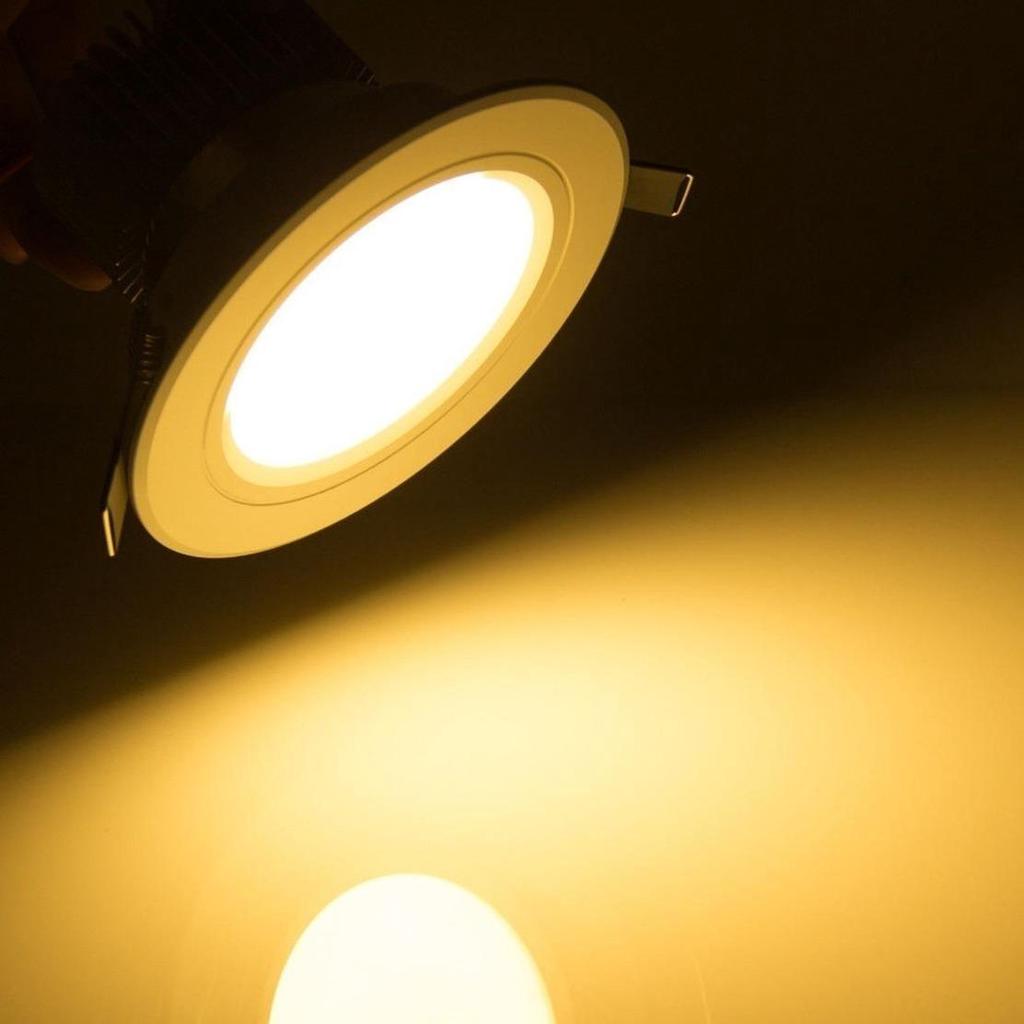The quantity of light is measured in multiple ways; however, lumens and lux are two that tend to be the most confusing, but they don’t have to be.
Lumens are a measure of light output from a source. The more lumens the fixture gives off, the brighter the light is produced.
But a 10,000 lumen fixture is always a 10,000 lumen fixture. Whether you put it in a small room, a car park or if it’s installed at higher or lower distances from the ground, it doesn’t matter – it’s always 10,000 lumens.
Lux also measures light, but they measure how much light is hitting a surface.
So, what is exactly 1 lux?
One lux (1 lux) of light is a measure of the light density, equivalent to 1 lumen per square metre (lm / m^2).
The diagrams below helps to visualise this more easily.
Lux measurements are more important when deciding how much light you need because it takes the space into account. Unlike lumens, Lux can change based on distance from the light source, ceiling, and objects.
So, a 10,000 lumen fixture in a small room, 3 metres from the floor is probably going to be very bright while the same fixture placed 7 metres above a car park may not be bright enough.
In fact, when Australian lighting standards are written they use Lux measurements to specify the minimum amount of light required for each facility or application while lumens help us achieve the proper lux readings we’re looking for.
Here’s a simple guide to help you determine which fitting is needed to light a room:
Step 1: Determine the lux level required by referring to the table below.
Step 2: Determine the approximate area of the room in square metres.
Step 3: Calculate the lumens (lm) required using this formula:
Lumens required = (desired lux level) x (area in squared meters)
Step 4: Divide the total lumens required by the lumen rating of the light fixture to determine the number of lights required.
Australian Standard Lux Levels
| Lux | Suitable Areas |
| 40 | Corridors, Passageways |
| 80 | Warehouse tasks, Stairs |
| 160 | Entrance halls, Foyers, Waiting Rooms, Canteens, Machine shop general work bench |
| 240 | Kitchens; Food preparation, cooking, washing up |
| 320 | General Office tasks involving typing, reading, writing; Meeting, training and seminar rooms etc. |
| 400 | Machine shop high tolerance work bench |
| 600 | Electronic assembly work, Jewellery and watch repair |
Understanding lumens and lux measurements can help us choose the right lights with the right spacing to achieve the perfect lighting for your application.
Choose POWER-LITE Lighting fixtures that offer excellent quality, energy efficiency and high lumen distribution.
If you have a project requiring lighting, call our experienced lighting experts at Nedlands Group on
We can provide individualised lighting design plans and effective solutions based on the specific characteristics of your space and the commercial objectives you are hoping to achieve.









 LOGIN TO
LOGIN TO